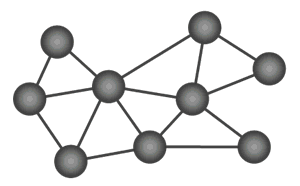DigiMesh networking
A mesh network is a topology in which each node in the network is connected to other nodes around it. Each node cooperates in transmitting information. Mesh networking provides these important benefits:
- Routing. With this technique, the message is propagated along a path by hopping from node to node until it reaches its final destination.
- Ad-hoc network creation. This is an automated process that creates an entire network of nodes on the fly, without any human intervention.
- Self-healing. This process automatically figures out if one or more nodes on the network is missing and reconfigures the network to repair any broken routes.
-
Peer-to-peer architecture. No hierarchy and no parent-child relationships are needed.
- Quiet protocol. Routing overhead will be reduced by using a reactive protocol similar to AODV.
-
Route discovery. Rather than maintaining a network map, routes will be discovered and created only when needed.
-
Selective acknowledgments. Only the destination node will reply to route requests.
-
Reliable delivery. Reliable delivery of data is accomplished by means of acknowledgments.
-
Sleep modes. Low power sleep modes with synchronized wake are supported with variable sleep and wake times.

With mesh networking, the distance between two nodes does not matter as long as there are enough nodes in between to pass the message along. When one node wants to communicate with another, the network automatically calculates the best path.
A mesh network is also reliable and offers redundancy. For example, If a node can no longer operate because it has been removed from the network or because a barrier blocks its ability to communicate, the rest of the nodes can still communicate with each other, either directly or through intermediate nodes.
Note Mesh networks use more bandwidth for administration and therefore have less available for payloads.
 PDF
PDF


